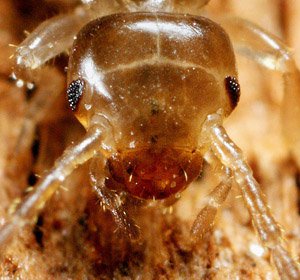Booklice Are Tiny and Love Mold and Fungi
Booklice (psocids) are itsy, bitsy little bugs - about 1/16 “ long and they are not actually lice at all and are harmless. But, they are still bugs and must be dealt with accordingly!
If you’ve got any dried out or decaying plants, you might find these little critters enjoying a plant buffet, or they may even be lurking around your stored food.
For identification purposes, the head and abdomen of a booklouse appear large, and the midsection is more narrow. Huge, compound eyes protrude from the sides of the head. They also have thread-like antennae that sweep back toward the abdomen. Not all booklice have wings, but some do (usually the booklice that stay outside), and when they do, there are four of them - two smaller front wings and two larger back wings. Most of the ones you will be hunting indoors should be wingless booklice.
If you live in the United States, there is a bit of good news about booklice, in that there are only about a few hundred known species here. The rest of the world has about another 1,000 species. They are tiny, but this article will show you where to look for them and how to eradicate them from your home or business.
Remember this about booklice, if nothing else: They feed only on fungi or mold, so if you find them it is an indication that you have high humidity that is apparently encouraging mold growth. So, above all, eliminate the moist environmental conditions you may be unknowingly providing for these pests.
Note: If you have only one of these pests (not likely), it’s called a booklouse, which we find to be a fitting name.
A Booklouse, Up Close

